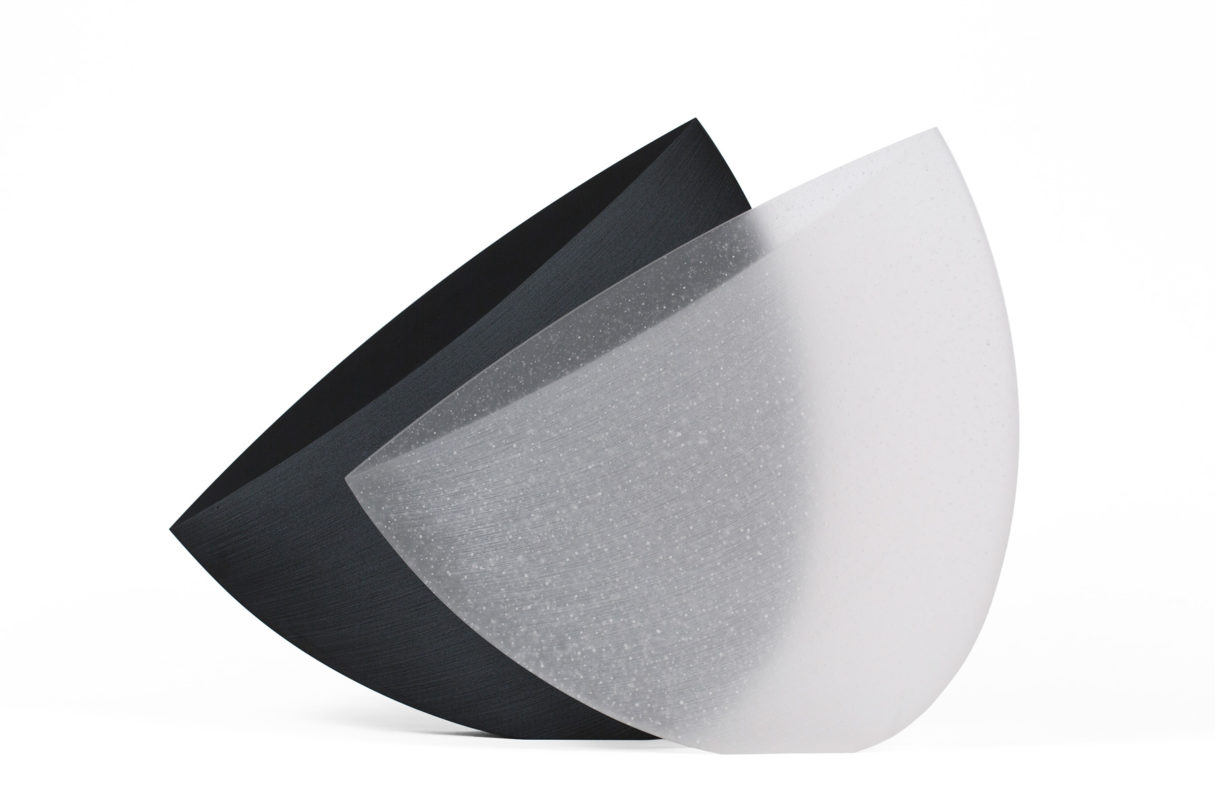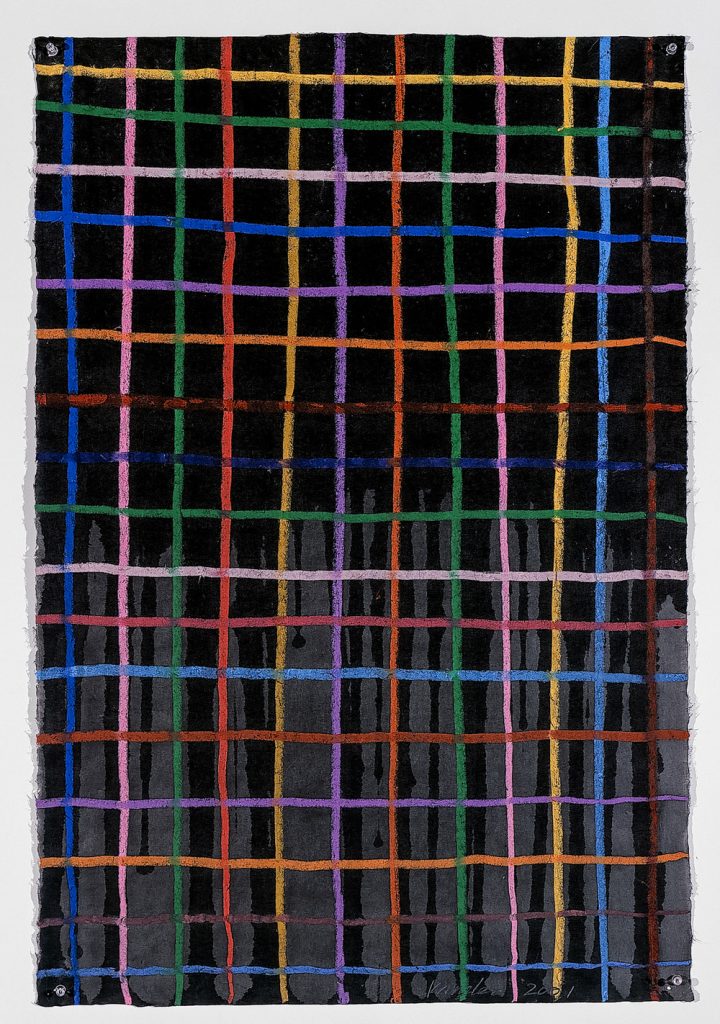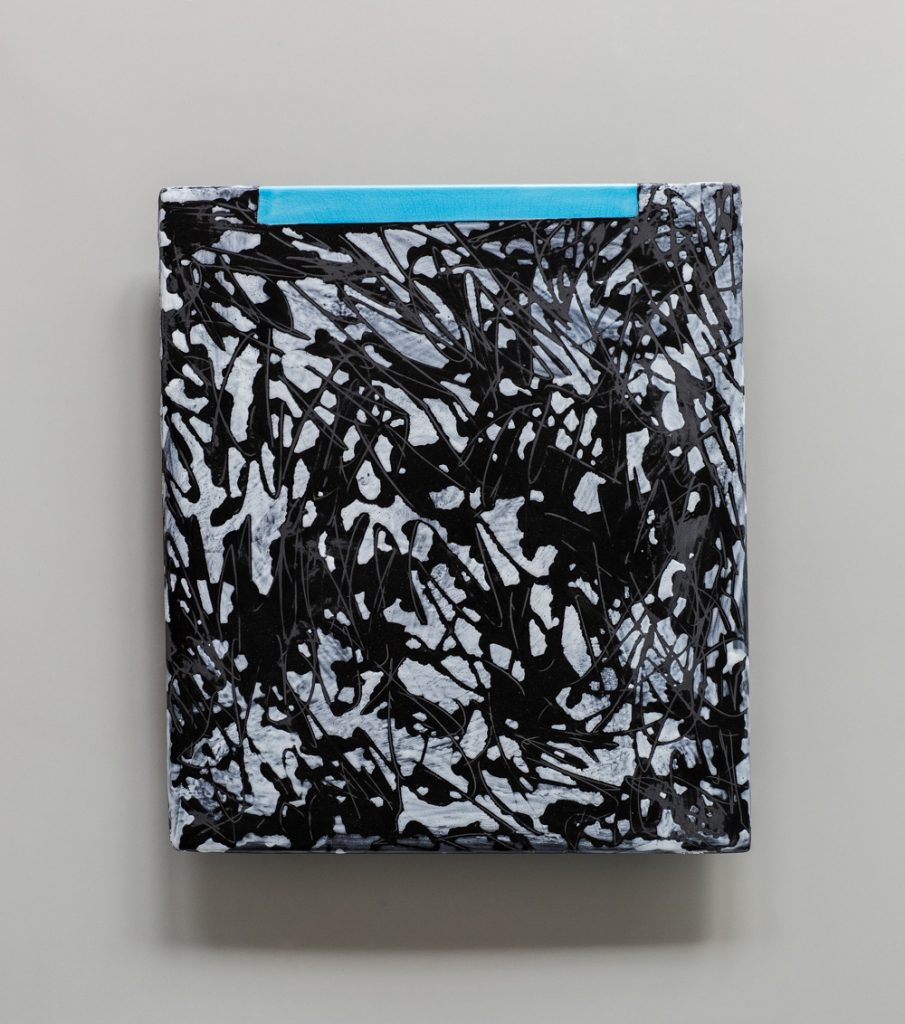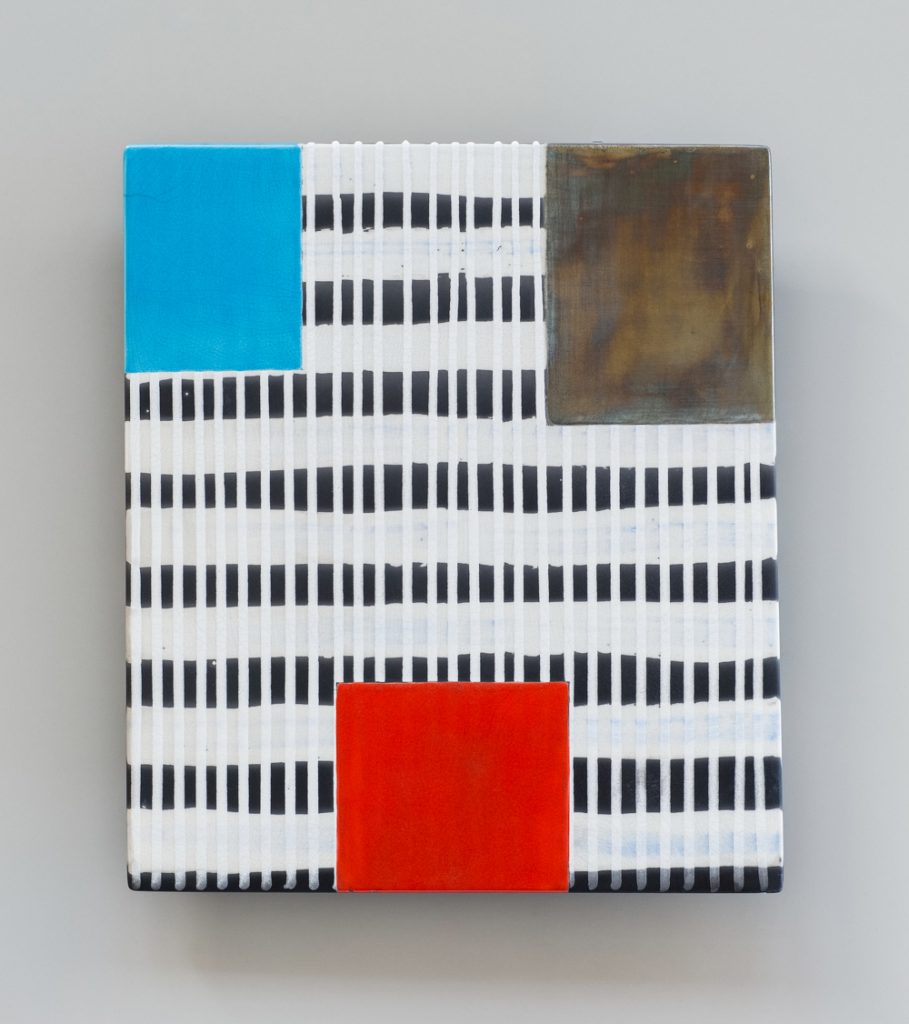SOFA Chicago 2018
Sculpture Objects Functional Art and Design

-
About
Mel Douglas - view profile
Mel Douglas is one of the most celebrated artists working in glass today. Douglas’s refined and detailed work employs a minimalist aesthetic along with considered mark-making to engage a dialogue of how line and form can define and defy our understanding of space and volume. Douglas’ work explores the potential, versatility, and flexibility of glass as a material for drawing, and with it, expands our view of glass as a sculptural medium.
In Douglas’s words, “objects and drawings are often thought of as two separate entities. my pieces explore and interweave the creative possibilities of this liminal space, where the form is not just a support for drawing; but a three-dimensional drawing itself. Using the unique qualities of the material and the rich potential of mark-making on and with glass, I am using line as a way to inform, define and enable dimensional space”.
Mel Douglas has worked as an independent studio artist since graduating from the Canberra School of Art, Australian National University, in 2000. In 2020 Douglas was awarded a Ph.d. for her practice-lead research investigating how we can understand studio glass through the aesthetics of drawing. In addition to winning the 2020 and 2014 tom Malone Prize- a prestigious award through which a work is acquired each year into the collection of the National Gallery of Western Australia – Douglas has received several major awards, including the Ranamok Glass Prize in 2002 and the International Young Glass Award in 2007 from the Ebeltoft Museum of Glass.
In 2019 her work was the inaugural acquisition for the Australian National Gallery of Art’s Robert and Eugenie Bell Decorative Arts and Design fund. Douglas’ work is held in the private collections and public institutions internationally, including the Corning Museum of Glass, The Chrysler Museum of Art, the Ebeltoft Museum of Glass, and the National Gallery of Australia.
-
Tim Edwards
- view profile
Tim came to glass from a ceramic background, from which he developed a bold sense of design and surface manipulation. This can be seen in the works for which he has gained an international reputation. Tim’s work is blown or shaped in the hotshop and then cut, carved and ground using the lathe with diamond and stone wheels.
He has a strong connection to JamFactory, the premier Craft and Design facility located in Adelaide, South Australia. He first completed a traineeship in Ceramics in 1992 with Stephen Bowers and then went on to complete a traineeship in Glass with Nick Mount, both experiences have played a significant role in his development. Tim also worked as an artist at Blue Pony studio from 2001 to 2008.He now works as an artist and glass studio technician at JamFactory, and shares a home studio with partner, Clare Belfrage.
Tim has spent time in North America as a teacher and student at the Pilchuck Glass School, Haystack School of Crafts and at Ohio State University as a Scholar in Residence. In 2007 he undertook a residency at the Tacoma Museum of Glass as a visiting artist.
Exhibiting nationally and internationally, Tim has art work in major public collections, notably the Corning Museum of Glass, Corning, USA, Museum of Glass, Tacoma, USA, National Gallery of Australia, Art Gallery of South Australia, National Gallery of Victoria, Art Gallery of Western Australia and Wagga Wagga National Art Glass collection. In 2006 Tim was awarded the Rakow Commission from the Corning Museum of Glass, being the second Australian to receive this significant award.
In 2018 Tim was selected as one of 30 artists to participate in the prestigious Adelaide Biennial of Australian Art, “Divided Worlds” at the Art Gallery of South Australia.
-
Jun Kaneko
- view profile
Jun Kaneko was born in Nagoya, Japan in 1942. He studied painting with Satoshi Ogawa during his adolescence – working in his studio during the day and attending high school in the evening. He came to the United States in 1963 to continue his studies at Chouinard Institute of Art when his introduction to Fred Marer drew him to sculptural ceramics. He proceeded to study with Peter Voulkos, Paul Soldner, and Jerry Rothman in California during the time now defined as The Contemporary Ceramics Movement in America. The following decade, Kaneko taught at some of the nation’s leading art schools, including Scripps College, Rhode Island School of Design and Cranbrook Academy of Art.
Based in Omaha since 1986, Jun Kaneko has worked at several experimental studios including European Ceramic Work Center in The Netherlands, Otsuka Omi Ceramic Company in Japan, Fabric Workshop in Philadelphia PA, Bullseye Glass in Portland OR, Acadia Summer Arts Program in Bar Harbor ME, and Aguacate in Puerto Vallarta, Mexico. Over the course of his career, he has partnered with industrial facilities to realize large-scale, hand-built sculptures. The first was his 1982-1983 Omaha Project at Omaha Brickworks. Later sculptures include his Fremont Project, completed in 1992-1994 in California, and most recently his Pittsburg Project completed in 2004-2007 in Kansas. Both of these later series of sculptures were created at Mission Clay Products. In April 2013, his exhibition Myths, Legends and Truths opened at Millennium Park in Chicago featuring thirteen nine-and-a-half foot tall Dangos and twenty-three of his Tanukis. This new body of work by Kaneko draws upon the myths and legends of the tanuki figure.
His artwork appears in numerous international and national solo and group exhibitions annually and is included in more than seventy museum collections. He has realized over thirty public art commissions in the United States and Japan and is the recipient of national, state and organization fellowships. Kaneko holds honorary doctorates from the University of Nebraska, the Massachusetts College of Art & Design and the Royal College of Art in London.
Kaneko is increasingly drawn to installations that promote civic interaction. He has completed over fifty public art commissions, including his two three hundred and fifty foot long Tile Walls at Aquarium Station in Boston, MA (1993-2000), a 3-story high wall in the Biology Library at The University of Connecticut (1997) and at the the Mashima Sports Arena in Osaka Japan (1994); permanent plaza installations in Council Bluffs and Des Moines, IA (2007 and 2013), at Bartle Hall and Convention Center in Kansas City, KS (2006), and at the International Finance Center in Shanghai, China (2012). In 2014 his fifty-six foot tall Glass Tower, Plaza Design, and Tile Wall will be permanently installed in Lincoln, NE.
Jun Kaneko’s new design for San Francisco Opera’s production of Mozart’s The Magic Flute is currently touring the United States. It opened in San Francisco, Omaha, Kansas City. Its final performance will take place at The Washington National Opera at The John F. Kennedy Center. His production of Puccini’s Madame Butterfly, which premiered at Opera Omaha in March 2006, opened in June 2014 at the San Francisco Opera.
In 1998, he and his wife Ree Kaneko formed a non-profit cultural organization in Omaha Nebraska called KANEKO that explores and encourages the process of creativity. KANEKO is headquartered in landmark, turn-of-the-century warehouses in the Old Market District of Omaha, Nebraska. Jun Kaneko continues his dedication to life as an artist and as a cultural catalyst for the region.
-
Michael Peterson
- view profile
Michael Peterson was born in 1952 in Texas and lives with his wife, Jean, on Lopez Island. Introduced to wood in 1975, Michael’s work continues to explore the potential of process and material. Central to the work is evoking a sense of naturalness, landscape, object and coastal influence. Attending Edmonds Community College in the late 1970s, he was impressed with the importance of practicing his craft. His Landscape Vessel series and Coastal Objects series of the1980s and 1990s served as a foundation for his approach to surface and sense of organic form. In 2003, Michael began a series of stacked sculptures that focused on arrangements of an accumulation of multiple elements and the transformative qualities of unseasoned madrone burl. In 2009, Evolution/Revolution, a traveling solo exhibition curated by Bellevue Arts Museum, represented 20+ years of Michael’s work. His work is found in numerous private and public collections throughout the U.S. and England. In 2014 Michael was the recipient of a Washington State Artist Trust Fellowship Award.
“My work evolves out of the process of making and develops its own logic. There are few absolutes. As a Northwest wood sculptor, my approach to surface and organic form has always been grounded in the natural world and is aimed at evoking a sense of naturalness.”
-
April Surgent
- view profile
April Surgent started working with glass in 1997, at open-access hot shop studios in her hometown of Seattle, WA. She went on to study at the Australian National University, Canberra, Australia where she graduated with honors in 2004. In 2003, she changed her focus from blown to wheel-engraved glass after studying under Czech master engraver Jiri Harcuba at the Pilchuck Glass School. She has been engraving for 20 years, interested in contemporary approaches to the traditional craft of wheel engraving. Notable recognitions for her work include a 2009 Behnke Foundation Neddy Fellowship, a 2016 USA Ford Fellowship, and acquisitions by Iowa State University and the Smithsonian’s, American Art Museum.
Observation and in-depth research inform her work discussing our changing planet. Her interest in natural history, applied science, and climate change have led her from Antarctica to Alaska studying vulnerable species and ecosystems. In 2013, she worked at Palmer station as a recipient of the National Science Foundations’, Antarctic Artist and Writers Program and in 2016 as a volunteer field biologist for the Hawaiian Monk Seal Research Program. Most recently Surgent has worked in Southwest Alaska with the US Geological Survey assisting with pelagic food web research. Surgent lives and works on the Quimper Peninsula in Washington state.
-
Jiro Yonezawa
- view profile
Jiro Yonezawa has been a bamboo craftsman and artist for almost 40 years. He trained at the Beppu Vocational Arts Training Center in 1981 and spent a year as an apprentice to Masakazu Ono. He continued his training at the Oita Prefectural Beppu Industrial Art Research Institute. In 1989 he moved to the United States and lived and worked there for almost 20 years. While in the US, his work became bolder and larger, and he started making sculptural pieces influenced by art he saw there. In 2008 he returned to his hometown in Japan and built a new studio in Saiki City, Oita Prefecture. Since his return, he has been active in the Japanese New Art & Craft (Nihon Shinkogei) organization and has received several national awards. He has also shown in Nitten, the annual National Fine Arts Exhibition.
He has had numerous solo exhibitions and has shown in group exhibitions internationally. His work is in many public and private collections such as the Microsoft Corporation in Seattle, the Mint Museum of Art in Charlotte, North Carolina, the Portland Art Museum in Oregon, the National Gallery of Victoria in Melbourne, Australia, and the Musée de Quai Branly in Paris. He is one of the bamboo artists selected to participate in an exhibit of Japanese bamboo art at the Musee des Arts Asiatiques de Nice in France in July 2024.





